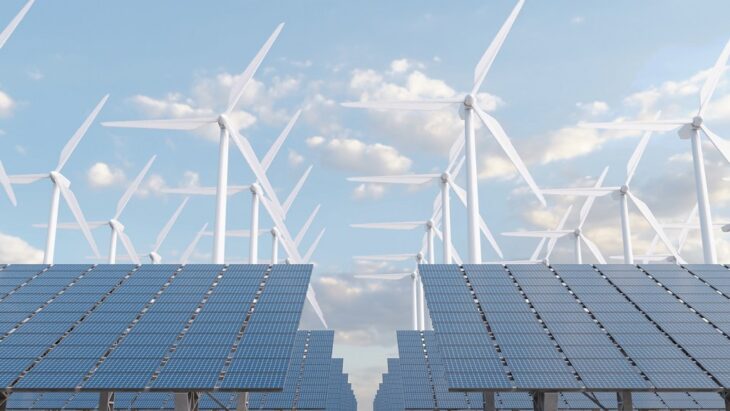In a world of elevated interest rates, recurring inflation, geopolitical frictions, and markets that often surprise, investors are increasingly asking: “What else can I own besides stocks and bonds?”
That question has given fresh urgency to alternative investments, broadly defined as assets outside the traditional public equity and fixed-income universe. These non-traditional assets offer potential diversification, different risk/return profiles, and access to growth drivers that aren’t necessarily visible in the S&P 500 or government bond yields.
For someone who has built their base portfolio in conventional assets, stepping into non-traditional territory can feel like opening a new chapter. The appeal is two-fold. First: the hunt for returns in a world where bonds yield little and stocks face valuation risks.
Second: the desire for assets that don’t move in lockstep with the broad market, so when equities stumble, the rest of your portfolio doesn’t automatically tumble. Many large institutions have already shifted accordingly. But that doesn’t mean the path is easy. These assets often require longer time horizons, more due diligence, more illiquidity, and often higher fees.
In what follows, I set out several non-traditional asset categories that look especially interesting in 2025, why they matter now, and what the trade-offs are. Use the tables and discussion to compare and contrast.
Table of Contents
Toggle1. Real Assets and Infrastructure

The world is rebuilding. Energy grids, logistics systems, and data centers are expanding faster than ever, driven by population growth and the digital economy.
Investing directly or indirectly in real assets such as housing, renewable energy, or data infrastructure has become a practical way to link portfolios with physical growth.
These investments tend to resist inflation because rents, tolls, or utility fees often rise with prices. In 2025, real estate funds targeting logistics warehouses and renewable infrastructure are drawing strong inflows.
They provide stable cash flows, but investors need patience: development timelines are long, liquidity is low, and returns depend on management skill.
| Category | Focus | Appeal in 2025 | Key Risk |
| Logistics real estate | Warehouses, distribution hubs | E-commerce expansion and inventory demand | Interest rate exposure |
| Energy infrastructure | Solar, wind, battery storage | Energy transition momentum | Regulatory shifts |
| Data facilities | Server and AI storage | Digital economy growth | High capital cost |
2. Private Credit

When banks pull back on lending, private funds step in. Private credit, where investors lend directly to businesses ,has become one of the fastest-growing segments in global finance. It sits between bonds and private equity: investors receive steady income like bondholders, but at higher yields.
In 2025, private credit yields often surpass 10 percent annually, depending on structure and borrower quality. Companies prefer this financing for flexibility, and investors value the insulation from daily stock-market swings.
The main challenge lies in credit risk and illiquidity. Funds usually lock capital for several years, so it’s vital to trust the lender’s due diligence.
Private credit sits at the heart of a broader universe known as alternative investments, a category that includes assets outside traditional stocks and bonds. It represents how finance has evolved, where private funds, not just banks, now channel capital into businesses seeking flexible lending options.
| Type | Description | Typical Return | Main Risk |
| Senior secured loans | Collateralized direct lending | 8–12% | Default risk |
| Mezzanine finance | Subordinated business loans | 12–15% | Higher volatility |
| Distressed credit | Buying troubled debt | 15%+ | Economic downturns |
3. Tokenized and Digital Real-World Assets

Technology is reshaping how investors access private markets. Tokenized real-world assets, digital representations of property, art, or debt, are no longer a niche idea. In 2025, this field is moving toward regulated, institution-level platforms.
Tokenization allows investors to buy fractions of assets that used to be off-limits to individuals, improving transparency and liquidity.
For example, a data center, apartment building, or loan portfolio can be divided into digital tokens, each representing ownership rights. These are stored on secure blockchains, making settlement faster and reducing entry barriers.
The innovation is exciting, but investors must watch for evolving regulations and technological reliability.
| Asset | Tokenization Advantage | Limitation |
| Real estate | Fractional ownership | Legal framework still forming |
| Art and collectibles | Democratized access | Price discovery issues |
| Infrastructure debt | Easier transferability | Platform stability |
4. Farmland, Timber, and Natural Assets

As climate change reshapes global supply chains, land-based assets have turned from old-fashioned to strategic. Farmland generates both income (through crops) and capital appreciation (through scarcity). Timberland provides long-term growth with periodic harvest cash flow. These assets also align with sustainability goals, which attract institutional funds.
In 2025, global demand for agricultural land remains high, especially in stable regions with reliable water access. Investors are using managed funds that handle operations and compliance.
Risks include weather events, commodity-price swings, and regional regulation, but long-term performance has been quietly steady.
| Asset | Income Source | Average Annual Return | Risk Level |
| Farmland | Crop yields, lease income | 7–10% | Medium |
| Timberland | Tree growth, timber sales | 6–9% | Medium |
| Water rights | Leasing or resale | Variable | High (policy dependent) |
5. Private Equity and Growth-Stage Companies

Private markets have overtaken public ones in sheer size. Many promising startups now remain private for a decade or more, giving growth equity and buyout investors access to innovation long before IPOs.
Private equity thrives when it identifies undervalued businesses or those ready for operational improvement. In 2025, healthcare, logistics technology, and clean manufacturing are hot areas.
These deals offer double-digit potential returns but require patience; capital is usually locked up for ten years or longer.
| Stage | Focus | Typical Return | Exit Strategy |
| Growth equity | Mature startups seeking expansion | 12–18% | IPO or strategic sale |
| Buyouts | Established businesses under new ownership | 10–15% | Restructuring, resale |
| Venture capital | Early-stage tech and biotech | 20%+ | High risk, long horizon |
6. Collectibles and Cultural Assets

For those drawn to tangible beauty, collectibles remain a captivating niche. Fine art, vintage cars, rare watches, and wine collections continue to attract investors who value scarcity and emotional connection as much as price appreciation.
The art market alone surpassed 67 billion USD globally in 2024, with continued strength expected.
Unlike financial instruments, collectibles depend on taste, cultural trends, and provenance. While prices can rise sharply in bull cycles, they can also stagnate when demand cools. Investors often treat these as long-term legacy holdings rather than short-term trades.
| Category | Growth Driver | Liquidity | Note |
| Fine art | Cultural prestige, scarcity | Low | High storage and insurance costs |
| Classic cars | Heritage and nostalgia | Moderate | Requires maintenance expertise |
| Rare spirits/wine | Aging value, limited supply | Moderate | Sensitive to authenticity |
Integrating Non-Traditional Assets into a Portfolio
For individual investors, these assets serve one main goal: diversification. Adding even a small percentage of non-traditional exposure can smooth portfolio volatility. A balanced investor might allocate 10–20 percent to such holdings, spreading it across real assets, private credit, and digital innovations.
These assets often require longer commitments and careful vetting, but they also bring independence from the daily drama of the stock market. Working with specialized advisors or platforms that handle due diligence is increasingly common, especially for first-time entrants into this space.
Conclusion
2025 is shaping up as a pivotal year for investors who are ready to move beyond conventional choices. Real assets connect portfolios to the physical economy, private credit delivers steady yield, tokenized instruments open new access points, and farmland offers resilience that technology can’t replace.
Collectibles and art add personality while preserving value in unpredictable markets.
Owning a mix of these non-traditional assets can strengthen a portfolio against shocks and create opportunities that standard equities and bonds simply cannot provide. The future of wealth building now lies as much in the tangible and the innovative as it does in the traditional and the familiar.



